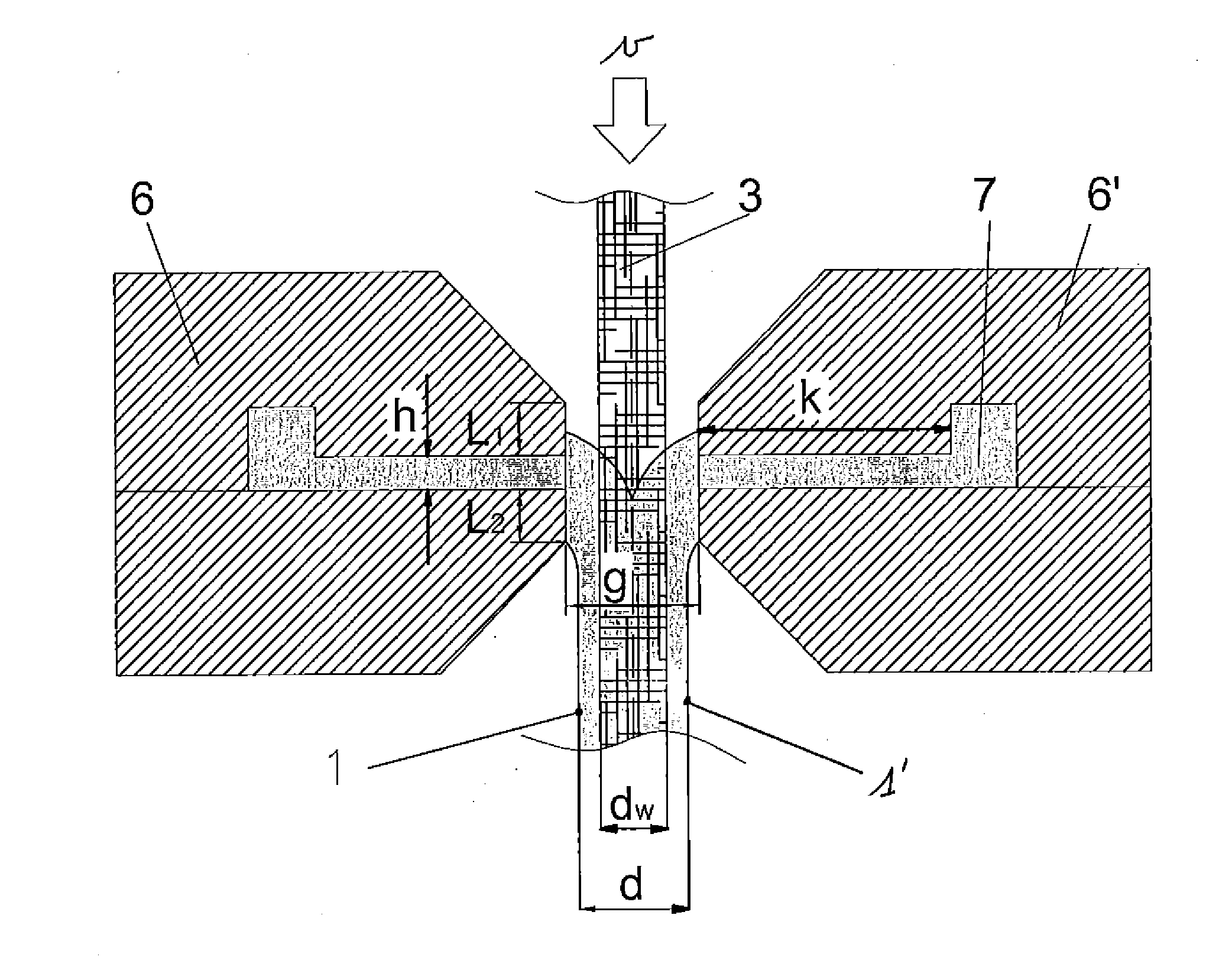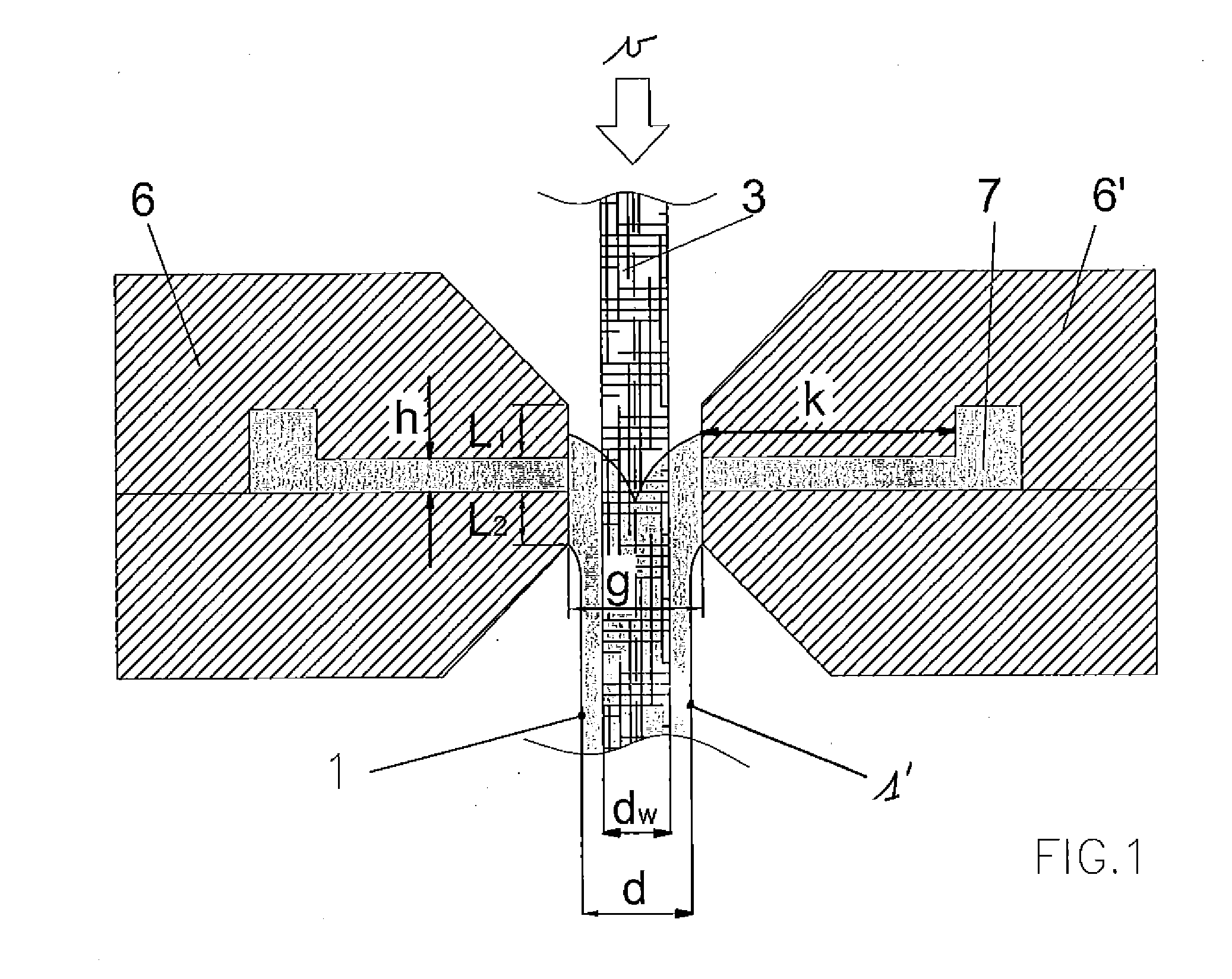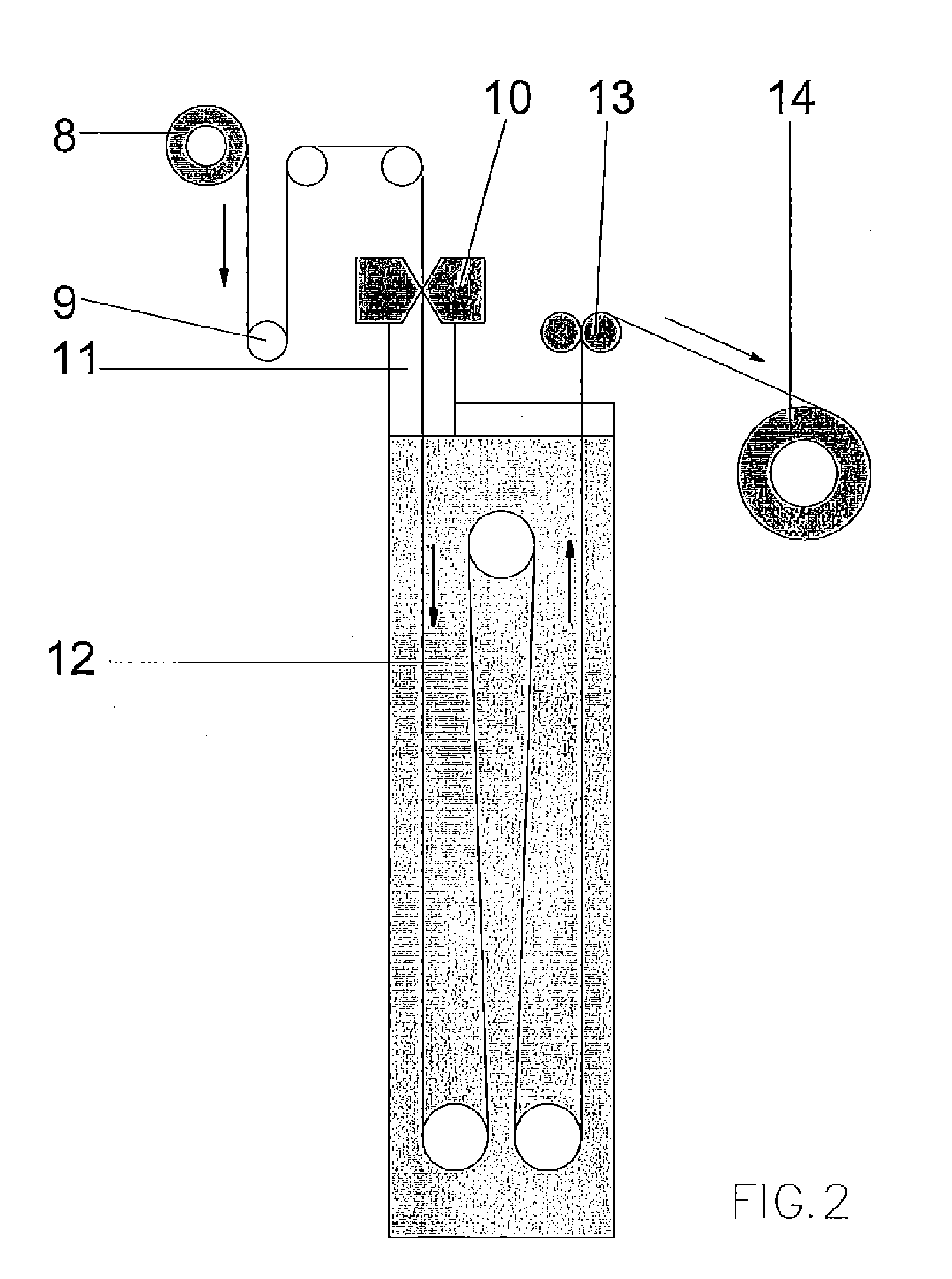Process for producing an ion-permeable web-reinforced separator
a technology of web-reinforced separator and ion-permeable membrane, which is applied in the direction of membranes, cell components, cell component details, etc., can solve the problems of poor ionic conductivity of the separator obtained, inability to meet the needs of the membrane surface, etc., to achieve the effect of flat membrane surfa
- Summary
- Abstract
- Description
- Claims
- Application Information
AI Technical Summary
Benefits of technology
Problems solved by technology
Method used
Image
Examples
example 1
Model Experiments
[0105]Layers of each of dope 2 and dope 7 were separately coated on a non-porous support with wet-layer thicknesses of 100 μm, 500-600 μm and 700-800 μm using the apparatus schematically shown in FIG. 2. The coating speed i.e. the transport speed of the support was 1 m / min and each impregnation head provided 400 mL / m.min of dope at a temperature of 80° C. to each side of the support. Phase inversion was realized by inversion, coagulation and washing by immersion in a water bath at a temperature of 60° C. [5] to remove the solvents N-ethyl-pyrrolidone and glycerol followed by rinsing. Pore sizes in the range of 50 nm to 100 nm were thereby realized.
[0106]Finally the resulting porous layers were dried at 40° C. for 60 minutes, the crimp of the resulting unsupported porous layers was evaluated at temperatures of 60° C. and 100° C. in water over periods of 1 to 10 minutes with a control experiment over 110° C. to check whether the crimp in hot water after 10 minutes rep...
examples 2 to 5
[0110]The separators of EXAMPLES 2 to 5 were produced using the apparatus shown in FIG. 2 with as 3 m length and 49 cm wide elongated porous web PP 0445 / 51PW (see above for further information) with a phase inversion station immediately adjacent to the duplex impregnating apparatus with a separation of the duplex impregnating apparatus of 0 cm, 1 cm, 4 cm and 6.5 cm respectively from the surface of a water bath at 55° C. In the case of 1 cm, 4 cm and 6.5 cm separations the phase inversion process took place in the vapour phase above the surface of the water bath within an enclosed area, which had equilibrated with the bath overnight and have a relative humidity of 100% and a temperature of 47-48° C. The elongated porous web was transported at a speed of 1 m / min through the duplex impregnating apparatus downwards via the phase inversion station into the water bath in which coagulation and washing take place; and the dope used was dope 2 (see above) at a temperature of 60° C. and a sl...
PUM
| Property | Measurement | Unit |
|---|---|---|
| temperature | aaaaa | aaaaa |
| thickness | aaaaa | aaaaa |
| thickness | aaaaa | aaaaa |
Abstract
Description
Claims
Application Information
 Login to View More
Login to View More - R&D
- Intellectual Property
- Life Sciences
- Materials
- Tech Scout
- Unparalleled Data Quality
- Higher Quality Content
- 60% Fewer Hallucinations
Browse by: Latest US Patents, China's latest patents, Technical Efficacy Thesaurus, Application Domain, Technology Topic, Popular Technical Reports.
© 2025 PatSnap. All rights reserved.Legal|Privacy policy|Modern Slavery Act Transparency Statement|Sitemap|About US| Contact US: help@patsnap.com



